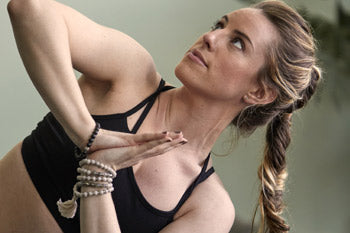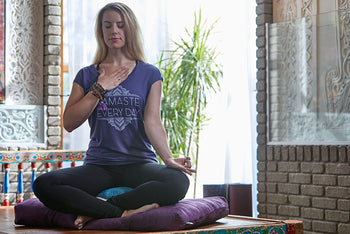Tossing and turning when you should be snoozing? You aren’t alone. More than twenty million Americans suffer from a lack of sleep. In fact, insomnia, defined simply as a “difficulty falling or staying asleep,” is one of the fastest growing epidemics in our society.
Whether you have frequent and inexplicable insomnia or just the occasional sleepless night triggered by a stressful day at the office, we all know what the next day feels like. You’re tired, irritable and your work suffers. Even your family and friends suffer because you sometimes snap at them for no apparent reason. (I officially apologize to everyone for my occasional lack-of-sleep induced outbursts!)
The tricky thing about sleep disorders is that there are so many variables that can contribute to a wakeful night. Was it something you ate? Did you work out too close to bedtime? Are there thoughts running through your head keeping you awake? But, even if you can’t pinpoint the exact cause, there are ways to help shake that sleeplessness.
Tips for a sound slumber
On a nutritional level, the number one, most important thing you can do to help your sleep is cut down on your caffeine intake. Just one cup of coffee (or other caffeinated beverage) before 10 a.m. should be fine, but nothing later. Caffeine stays in your body hours after you drink it. Unfortunately, this includes chocolate desserts, green tea and many over-the-counter cold medicines.
Think you won’t make it through the day without your frequent caffeine fix? Give it a try for a few days. We humans are amazing sources of Prana (energy) and we DO have what we need. Caffeine will actually take deplete that energy. Trust that you have, that you are enough.
Yoga can also be a powerful sleep aid. (Isn’t yoga amazing? Used correctly it can give you energy or help calm you down. Try to get THAT from a sleeping pill!) If you’ve had trouble sleeping lately, or sense that this might be a sleepless night, try this restorative inversion:
Just before bed, lie down on your back and place your legs up a wall. Your sit bones don’t actually have to touch the wall — a few inches away is fine and will cause less strain on your back. This position will allow the blood to flow into the head (without much energetic effort on your part), creating a soothing sensation. Close your eyes and maybe put an eye pillow on as a way of transitioning into a restful state. Slow your breathing, focusing on long smooth exhales. Stay in the inversion for 5-10 minutes. Get up very slowly and carefully and sit for a few moments before crawling into bed.
Caution: Other inversions, such as headstand, handstand and forearm balance, can wake you up, so stay away from those in the evening!
Sleep well!










